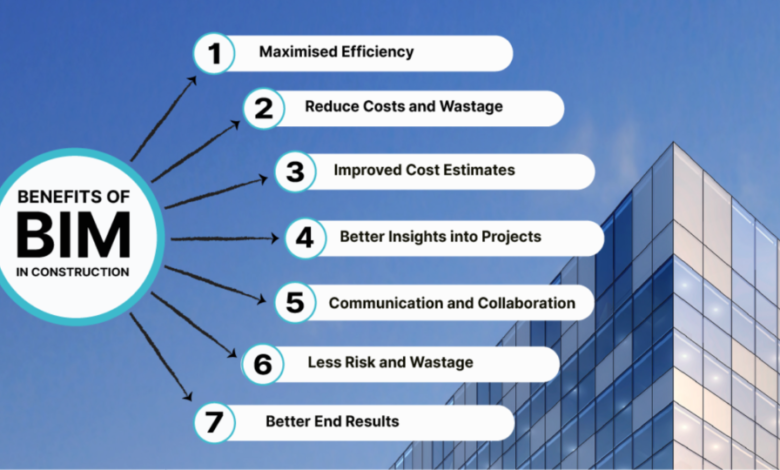BIM for Small Construction Firms: Benefits and Implementation

BIM is the new buzzword that is rapidly replacing conventional approaches to planning and design in construction. This is a team activity that involves the architect, engineer, constructor, and the owner of the building and it entails the manipulation of a model that contains points of accurate geometry and information that is related to the building.
Large firms have quickly embraced BIM as an effective means of construction operation while small firms have not easily embraced BIM thinking it is costly, time-consuming to train their employees, and lack adequate expertise. However, the advantages of BIM for small firms cannot be overlooked as the following are some of the benefits of using BIM. This article discusses those benefits and offers some guidelines on how to go about implementing Building Information Modeling.
Small firms are also likely to gain from BIM in the following ways:
Improved Collaboration and Communication
By providing a single model that can be accessed by all members of the project team and includes updated design and project information, BIM software facilitates effective coordination of project activities. This removes issues arising from stale plans as well as affords architecture, engineering, and Construction Estimating Services in New York teams chances to detect and rectify clashes at a much earlier stage. This connected workflow is useful for smaller firms that can implement it in practice rather than using paper-based planning and sharing of ideas.
Whenever there are changes in the construction plan or a design modification, the BIM model updates in real time, and this makes it more transparent. BIM also aids the field and office by linking 3D visualizations with information pertinent to them and their projects. The organization and efficiency of the team are enhanced in the process.
Higher Costs & Time Than A Regular ‘Follow The Leader’ Game
The use of Building Information Modeling is more reliable in terms of delivering specific results. Amounts and price forecasts generated by the model are finer and consequently more precise than conventional approaches. This enables small firms to prepare sound budgets and schedules without being beset by plan conflicts which may lead to extra costs for reworks.
It also may result in less waste since the sequencing of construction has been made better. Small companies can secure them for much cheaper than through other means and can do so without having to wait for the project to be completed. This means that through constructing the project on paper before even the first spade is turned, you’ll be able to identify such issues as constructability, at a time when changes are cheap.
Enhanced Quality Control
Therefore, the visual character and the richness of the data within the BIM model help small contractors obtain better quality management. They can utilize the model for digital coordination, develop elaborate fabrication and shop drawings, design and realize value engineering solutions for prefabrication, model, and critique construction processes, and design high-quality assurance plans.
BIM assistance includes site safety planning, through which small firms can develop reports on the quantities and places where dangerous materials are stored. In conclusion, BIM enhances small contractors’ implementation of quality standards across construction phases.
Expanded Business Opportunities
BIM needs to be collaborative as government agencies and large developers seek to use it in their projects. In this case, BIM is incorporated into small companies’ working processes to make them eligible for bidding on large-scale projects that are otherwise beyond their reach.
BS also enables a competitive edge when seeking to continue business with previous customers. It is therefore important to provide proof of the successful adoption of BIM to assure stakeholders within the firm that it is indeed a firm that is willing to embrace new technologies, quality assurance, and efficiency.
The following are strategies that can be adopted when implementing the use of BIM for Small Contractors:
Start with BIM Education
Managers and staff should acquaint themselves with BIM before software implementation or the alteration of the construction estimation company policies. In fact, through credible websites, one can get a good first course on BIM basics, applications, tools, and processes through free online courses and tutorials. Local colleges also have cheap short course offers for learners. Initiating BIM training creates an early start for its implementation.
Choose User-Friendly BIM Software
The first recommendation for small businesses is to focus on using easy-to-adopt and learn BIM design tools that are specialized for their trade. For instance, contractors may choose to work with basic I BIM modeling and coordination tools that permit them to share information with the other members of the building project. Many low-cost options do not necessarily have a lot of infrastructure in place by the Information Technology department. To get the best fit, it is advised to hire an expert consultant to consult on software selection.
Phase Implementation Over Time
This means that it is easier for small Cost Estimating Services contractors to adopt BIM if it is implemented in stages to avoid the pressure of having to implement a massive change all at once. BIM should be initially implemented on bidding, estimation, and high-value activities as these are likely to yield the best value. In 12-24 months, usage can span throughout the pre-construction and construction process to become an integrated BIM company. That is why people when acting slowly minimize risk while getting their share of the cake.
Ensuring Continuing Vocational Training is Available
Appreciation of BIM continues a staff’s training and creates motivation and continued professional updates and skill sets. It noted that after the initial training, there are many sources that small businesses can turn to for free tutorials, forums, or knowledge portals. BIM will be more impactful if there is an annual allocation for improving the skills of the firms through training sessions by vendors, conferences, and certificate courses.
Conclusion
BIM has continued to gain significant support from the industry, which makes it possible for small contractors to incorporate it into their strategic business model. The technology thus provides the open ground through which small construction estimating service firms can compete because it brings collaboration, visualization, efficiency, and insight. Admittedly, perceived barriers such as software cost, training necessity, and absence of proficiency frequently prevent the preliminary use of BIM, although low-risk implementation of this technology in a high-reward field may demonstrate its effectiveness. Essentially, small contractors can obtain significant returns on investment in due course of practice, and by exploring the available education materials and flexibility of the tools, they can implement adaptable BIM solutions. Based on the analysis of the current and future trends in the UK construction industry, it can be concluded that the future growth and survival of small construction businesses will depend on BIM.



